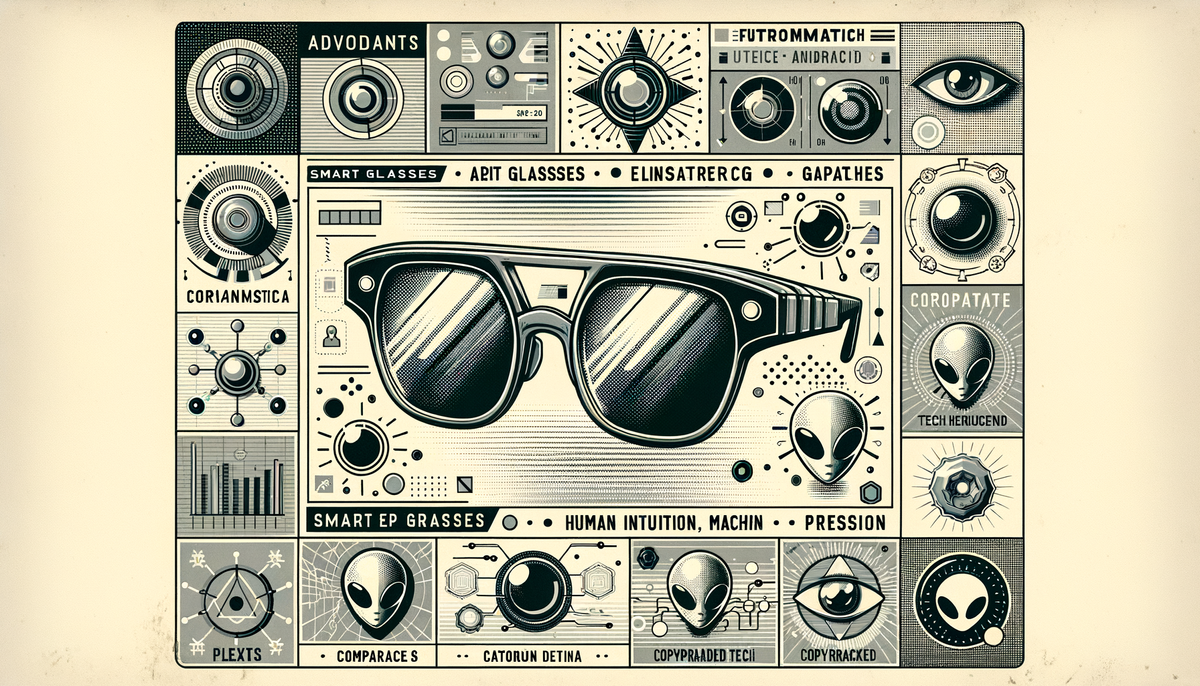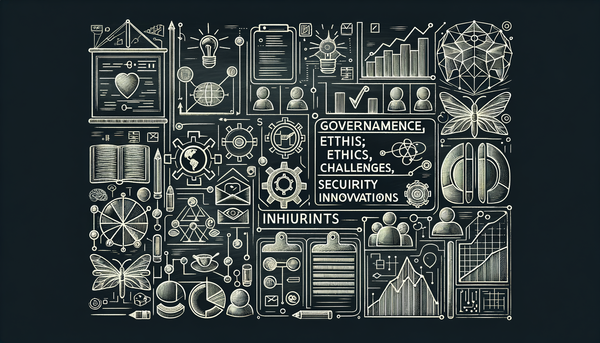Exciting Updates in Technology: A Comprehensive Overview

Android 16’s revolutionary live notifications and smart camera features, combined with next-generation smart glasses and AI-powered advertising tools, are transforming our technological landscape in ways that blend human intuition with machine precision.
Reimagining Mobile Experiences with Android 16 and Pixel Innovations
Android 16 is not merely another update—it’s a comprehensive transformation of how we interact with our devices. Recent improvements have redefined smartphone user interfaces by introducing live notifications that track everything from your rideshare status to the progress of your food order. This innovative progress bar in notifications minimizes app hopping and streamlines interactions, a detail that resonates with users who crave efficiency and organization.
Beyond these convenience features, Android 16 brings a suite of enhancements such as automatic grouping of notifications to reduce clutter and support for LE audio hearing aids. These elements reflect a clear focus on accessibility and inclusivity. The operating system has consolidated its security measures, giving users a simple, one-tap defense against malicious apps and scam calls. Such advancements underscore Google’s commitment to providing a safe and intuitive mobile environment.
The update is a boon for photography enthusiasts as well. With features like automatic night mode detection, hybrid auto exposure, and improved UltraHDR imaging, users can explore creative possibilities that were previously reserved for professional-grade equipment. Recent Pixel Feature Drops—detailing fresh innovations like the “Pixel VIPs” widget, Gboard’s AI sticker creator, and improved battery health insights—echo these efforts by enhancing personalization and connectivity. For those interested in a deeper dive into these developments, you may enjoy exploring our AI Podcast on latest AI technology updates and Google I/O innovations.
This interweaving of advanced features not only refines the user experience but also points toward a future where our smartphones adapt seamlessly to both our needs and our lifestyles.
AI-Powered Advertising: Democratizing Business Reach with AdGPT.com
The traditional divide in advertising—where big corporations with deep pockets dominated media—may soon be a relic of the past. AdGPT.com is stepping in to level this playing field, harnessing the power of artificial intelligence to empower businesses of all sizes. With its “magic prompt” system, this innovative platform can generate hundreds of tailored ads across Facebook, Instagram, TikTok, and YouTube with a single click.
Such efficiency is not just about saving time; it’s about creating ads that resonate. The platform leverages historical company data, audience behavior, and competitive benchmarks to shape content that fits a brand’s unique voice. The capability to automatically tailor ad formats to the specifications of various platforms means that businesses can now engage customers in a more dynamic and data-driven way. This approach is particularly exciting as we see advertising merging with AI, creating both opportunities and challenges in creative expression.
This evolution in marketing strategy reinforces the importance of leveraging technology to drive smarter business decisions. Just as our AI News Podcast has detailed mind-blowing technological updates, AdGPT.com demonstrates that the creative and commercial realms are increasingly becoming intertwined with artificial intelligence, promising a future where smart advertising is both agile and accessible.
Navigating Service Outages: Reliable Alternatives in the Age of AI Chatbots
Even as autonomous systems become embedded in our daily routines, disruptions remind us of our reliance on technology. The recent widespread outage of ChatGPT underscores the importance of having dependable alternatives. With millions of users depending on ChatGPT for its intuitive interface and exceptional language capabilities, even a temporary breakdown can ripple across countless workflows.
During such outages, alternatives like Claude, Leonardo.Ai for visual creativity, and Canva for video creation emerge as robust substitutes. These platforms not only keep the creative juices flowing but also highlight the ecosystem's overall resilience. The situation is a clear reminder of how important redundancy is in modern tech. When one service faces hiccups, others stand ready to fill the gap, ensuring that productivity and creativity remain uninterrupted.
The experience invites us all to cross-check the reliability of our tools and keep a diversified toolkit at hand—a lesson that resonates with tech enthusiasts and professionals alike, and which is frequently discussed on our AI News Podcast.
Smart Glasses and Wearable Tech: A New Frontier in Connectivity
The landscape of wearable technology is rapidly evolving with substantial strides made by Qualcomm and Snap. Qualcomm’s new AR1 Plus Gen 1 chip, which is powering next-generation smart glasses such as Meta Ray-Bans and potential newcomers like Google’s AR reference glasses, not only reduces the size of components by 20 percent but also enhances power efficiency and on-device processing capabilities.
This chip enables the smart glasses to operate with improved photographic features, real-time context-aware assistance, and even off-line AI functionality. The inclusion of Llama 3.2 edge AI, with its impressive one billion parameters, pushes the boundaries of what these devices can do—from advanced image stabilization to voice activation and beyond. In effect, the glasses are becoming more self-sufficient, less tethered to traditional smartphones, and more integrated into the fabric of our digital lives.
Snap Inc. is also joining this wearable revolution with their upcoming AR Spectacles set to launch in 2026. These standalone glasses promise a lightweight design, seamless integration with AI for spatial intelligence, and advanced gesture controls that can make interactions feel almost magical. Evan Spiegel, Snap’s CEO, hinted at the transformative impact of waveguide technology on their upcoming designs, ensuring that future AR experiences remain both immersive and user-friendly.
Moreover, Qualcomm’s exploration into smart rings for gesture-based controls introduces an entirely new dimension of interactivity. These advancements could lead to ecosystems where multiple wearable devices interact harmoniously, creating richer, more connected experiences. The interplay between these innovations and the tools featured in our recent explorations on Google I/O reveals a future where wearables integrate seamlessly with both software and hardware innovations.
Apple’s Calm in the AI Storm: Design-Centric Innovations at WWDC 2025
At WWDC 2025, Apple made waves by deliberately shifting the focus from the AI frenzy to a celebration of minimalist design and intuitive user experience. In a surprising departure from previous keynotes, Apple chose to refine its core products with a nostalgic nod to its early focus on aesthetics and usability.
With updates like the Liquid Glass redesign in iOS 26 and subtle yet impactful AI-driven enhancements in iMessage, Apple underlined its commitment to quality over quantity. Even though AI integration remains a crucial component in today's tech race, Apple demonstrated that sometimes less is more, serving as a reminder that elegance and functionality often go hand in hand.
This approach resonates powerfully with the idea that technology must ultimately serve the user, rather than overwhelm them with overly complex features. Analyst voices, including industry veteran Paolo Pescatore, suggest that by prioritizing thoughtful design, Apple is not ignoring AI—rather, it is channeling its promise in a more measured and user-focused manner.
Embracing the Human Element: Bridging AI Innovation with Human Capabilities
While machine learning and AI continue to push the boundaries of what technology can achieve, new research from MIT Sloan reminds us that not all human capabilities are replicable by algorithms. Researchers Isabella Loaiza and Roberto Rigobon argue that traits such as empathy, creative thinking, moral judgment, and emotional intelligence remain our unique stronghold.
This insight forms part of a broader narrative that artificial intelligence, for all its computational prowess, occasionally needs the subtle nuances that only human traits can provide. The framework they developed, based on metrics of risk of task substitution, potential for augmentation, and uniquely human qualities, suggests that roles deeply tied to empathy and creativity are not only safe from automation but could thrive alongside AI innovations.
Drawing on this knowledge, it becomes evident that the future of work might be best envisioned as a collaboration between human ingenuity and algorithmic capability. As Fei-Fei Li once remarked,
I believe in human-centered AI to benefit people in positive and benevolent ways.
This perspective reinforces that rather than AI replacing human capacity, it can elevate it.
In practice, this means businesses and educational institutions should focus on upskilling and developing human traits that complement technological enhancements. Such a synthesis could lead to a more balanced and sustainable progress, ensuring that technological evolution does not come at the expense of humanity’s unique strengths.
Further Readings and Resources for the AI Enthusiast
For those eager to explore these topics further, here are some additional sources and related discussions:
- AI Podcast: Updates and Insights into Latest AI Technology
- Google I/O 2025: Innovations and Developments
- AI Innovations: Today Episode Highlights
- AI News Podcast: Navigating the Landscape of Artificial Intelligence
- Engadget on Android 16
- TechCrunch on Android 16 for Pixel
- USA Today on AI-Powered Advertising
- CNET on ChatGPT Downtime
- Android Central on Qualcomm’s AI Chip
- MIT Sloan on Human Capabilities and AI
In a time when technology continues to rapidly advance, it is both reassuring and inspiring to see innovations that place the human experience at the epicenter of progress. Whether it’s the smooth integration of Android 16 features or the promise of smart wearables, our digital future is being shaped by a fusion of cutting-edge AI and timeless human values.




